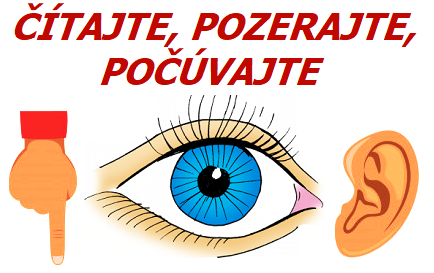26 Slovensko – moja vlasť - BRATISLAVA :)
Vytvorené: 18. 10. 2014 Tlačiť
Bratislava is the capital city of Slovakia. It is the largest town in Slovakia with approximately 500 000 inhabitants. Bratislava lies on both banks of the river Danube in south-western Slovakia, near Austrian and Hungarian borders.
Bratislava is a political, economical and cultural centre of the country. It is a seat of the parliament, Slovak president and the executive branch of government. Many large businesses and financial institutions have their seat there.
Bratislava has got five main parts of town including the Old Town. Across the Danube are four bridges and one of them is very unique - it is called "Most SNP". Bratislava is also an important crossroad of transport. The Danube connects Slovakia with the Black Sea. It is important trunk road in Europe. It has chemical, petrochemical (Slovnaft), engineering, clothing and food industries (Figaro). Bratislava has an airport with international terminal.
Historically the town has been known by various names. Germans used to call it Pressburg, the Greek name is Istropolis, while the Latin name is Posonium, Croatian name is Požun. The city was named Bratislava in 1919. The history of the city is very rich and it dates back to the Neolithic age when the castle hill was first settled. In the 5th century, the Slavs and then the Avars settled in the area. In the 9th century, Bratislava became an important town of the Great Moravia. The town gained the privileges of a free royal town in 1291. In 1467 the first Slovak University, Academia Istropolitana, was established. Bratislava was the capital of Hungary from 1526 to 1784.
The town has been the capital city of the Slovak republic since 1993.
The typical symbol of the capital is Bratislavský castle that towers over the river Danube. The first mention of the castle originates from beginning of the 10th century. The permanent and temporary development show various archeological and historical exposures. The oldest piece of art found on Slovak territory and exhibited in the castle represents the Palaeolithic Venus made of mammoth tusk. Not far away from the Bratislava Castle, we can find another castle situated on the confluence of the Danube and the Moravia. Its name is Devín, but only ruins of the castle have been preserved.
There are also many palaces in Bratislava. Grassalkovich palace is the residence of the president. The next one is Primacional palace where the permanent exposure of the tapestries is situated. The Mirror Hall is one of the most beautiful rooms of this palace in which The Pressburg Peace Treaty was signed on the 26th December 1805. In Mirbachs palace we can find Slovak art expositions, expositions of Gothic board paintings and European paintings and sculptures. It is one of the most beautiful palaces in rococo style. Pálffys Palace is built in an elegant classicist style. Visitors can admire not only central European paintings, but also Slovak paintings.
Another historical building is the Old Town Hall from l3th century. Today it serves as the museum housing valuable collections of documents, books and archeological foundings. The next museums are: The Slovak National Museum, The Municipal Museum and The City Museum.
Bratislava has also a lot of churches and the best-known one is St. Martin's Cathedral, that was built in l3th century in gothic style. The most interesting part is a tower with a gilded copy of the Hungarian royal crown, a symbol of the Hungarian king’s coronation. During the centuries 10 members of the Habsburg's dynasty have been crowned there.
The centre of Bratislava was once encircled by a line of fortifications formed by a wall and 4 entrance gateways. Michael’s Tower with its Michael’s Gate is the only one that remained preserved. The exposition installed in the Michael Tower informs about the fights which took place in Bratislava.
The Slavin Monument is a very interesting memorial and cemetery to visit in Bratislava. This monument is for the Soviet soldiers who died while freeing the city in the Second World War. Last but not least, there are the various charming bronze statues which can be found all around the Old Town, for example Napoleon´s army soldier or Paparazzi. There are many universities are in Bratislava, for example Academy of Drama and Music, Slovak Technical University, Slovak Chemical University, Slovak Economical University and Comenius University. Bratislava also offers many theatres, such as the Slovak National Theatre, Nová Scéna, Malá Scéna, Theatre Aréna, Hviezdoslav theatre. Bratislava's zoological park is located in Mlynská dolina. Visitors to the zoo can see 152 species of animals, including the rare white lion and white tiger. The city has a number of natural and man-made lakes, mo. Examples include Štrkovec lake in Ružinov, Kuchajda in Nové Mesto, Zlaté Piesky and the Vajnory lakes.
![]()
· Simulácie z fyziky· O Slovensku po slovensky· Slovenské kroje· Kurz národopisu· Diela maliarov· Kontrolné otázky, Domáce úlohy, E-testy - Priemysel· Odborné obrázkové slovníky· Poradňa žiadaného učiteľa· Rýchlokurz Angličtiny. Rozprávky (v mp3)· PREHĽADY (PRIBUDLO, ČO JE NOVÉ?)Seriály:· História sveta (1÷6)· História Slovenska (1÷5)· História módy (1÷5).
Členstvo na portáli
Poznámka pre autora
Copyright © 2013-2026 Wesline, s.r.o. Všetky práva vyhradené. Mapa stránky ako tabuľka | Kurzy | Prehľady |






